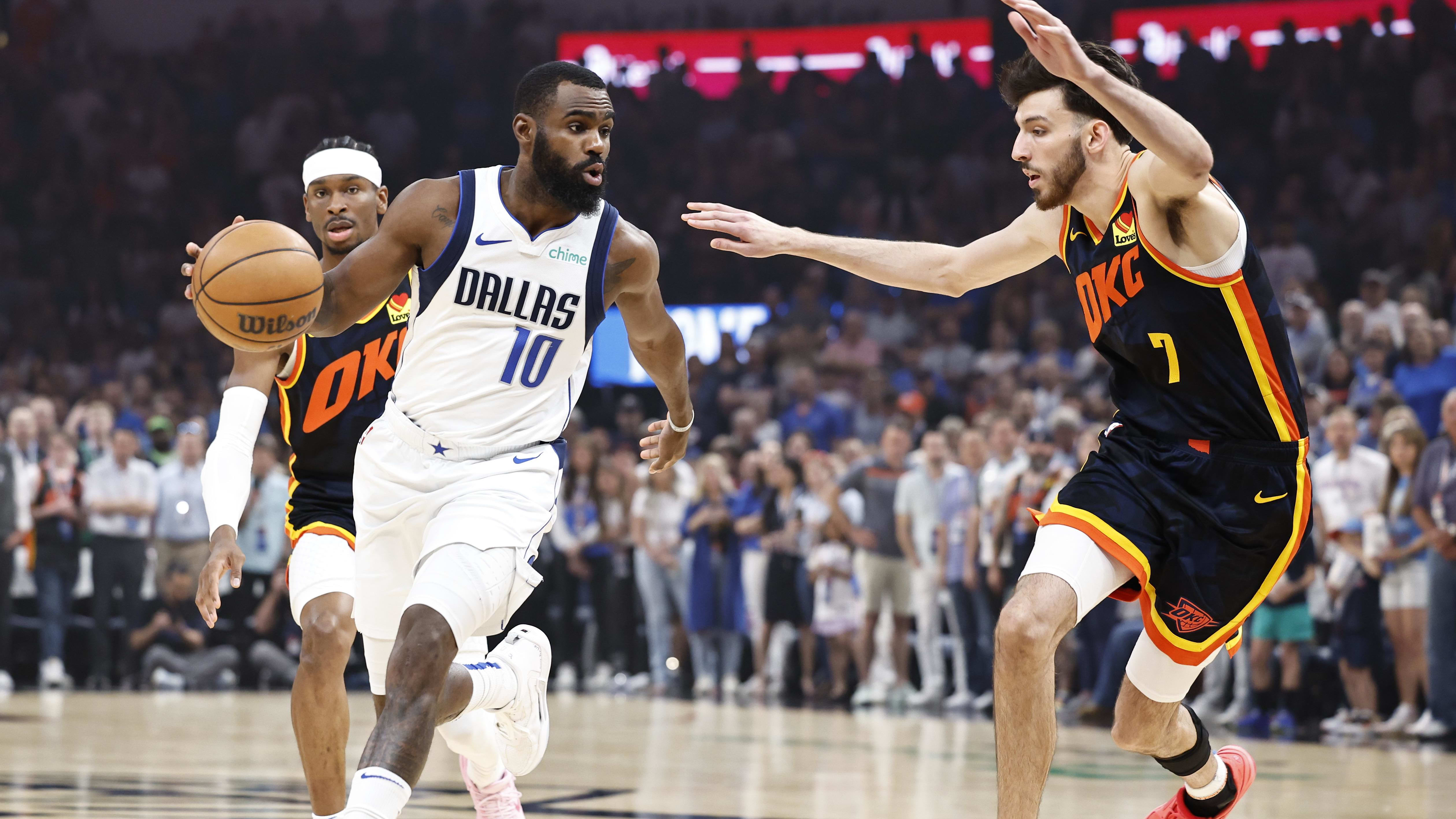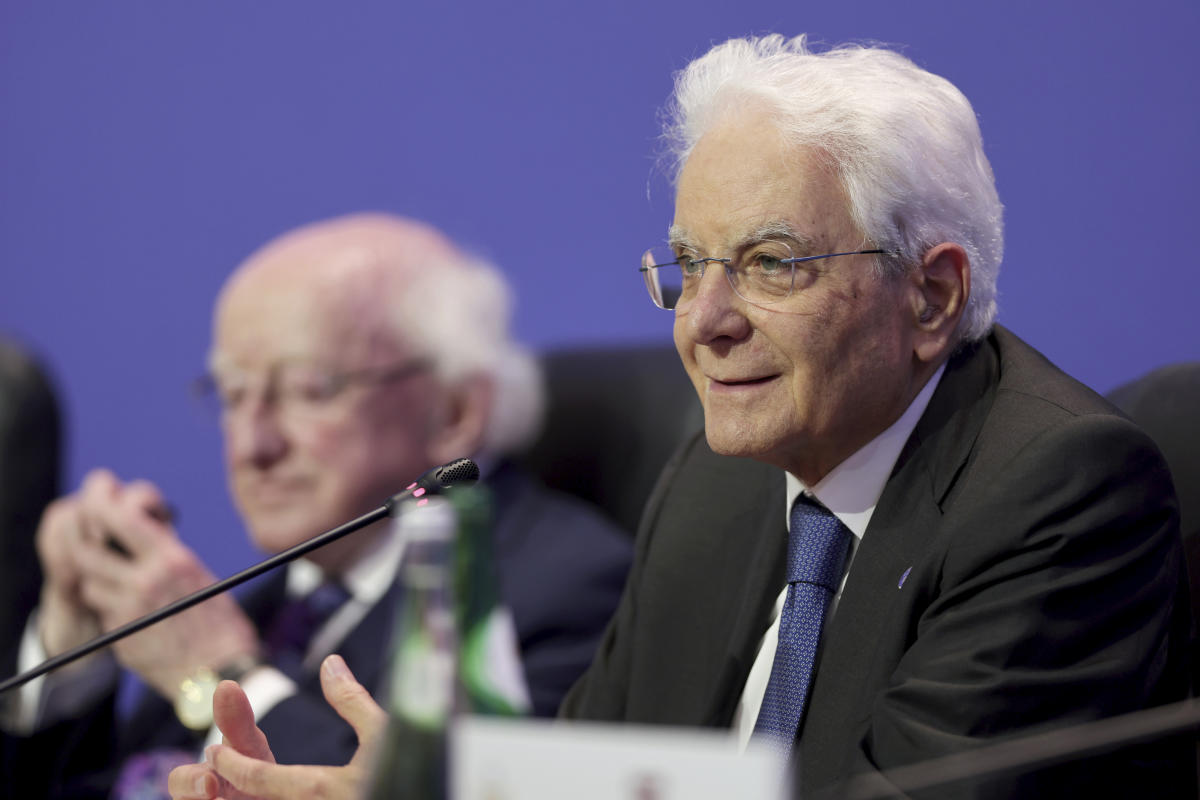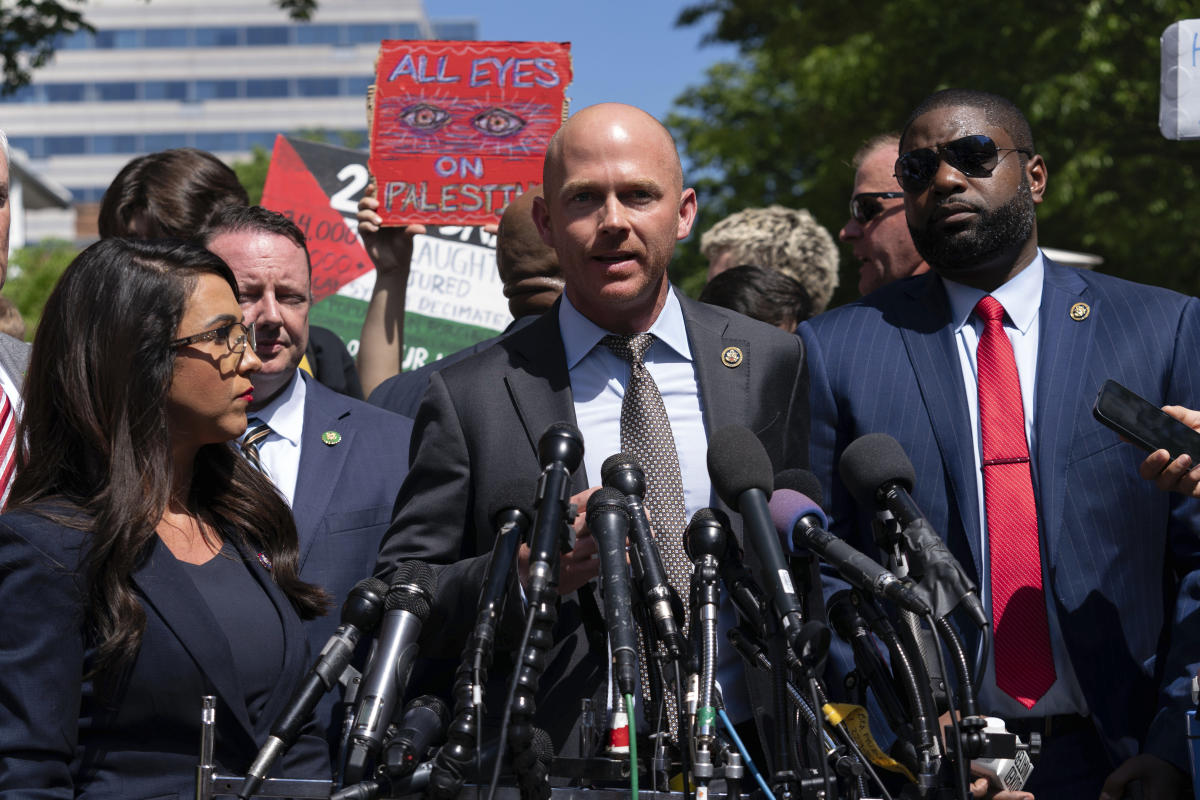As the first portion of the NBA season unfolds, each week we will highlight a handful of make-or-break players who will determine their teams’ fortunes, for better or worse. Before Christmas, you will have a full rundown of each team’s bellwether, so you can ride the ups and downs of the rest of the season with them.
The first five make-or-break players: Kyle Lowry, Miami Heat • Chet Holmgren, Oklahoma City Thunder • Khris Middleton, Milwaukee Bucks • Evan Mobley, Cleveland Cavaliers • Julius Randle, New York Knicks
The second: Jalen Johnson, Atlanta Hawks • Dereck Lively II, Dallas Mavericks • Jaden McDaniels, Minnesota Timberwolves • Alperen Şengün, Houston Rockets • Andrew Wiggins, Golden State Warriors
Last week: Santi Aldama, Memphis Grizzlies • Sam Hauser, Boston Celtics • Austin Reaves, Los Angeles Lakers • Jalen Suggs, Orlando Magic • Coby White, Chicago Bulls
This week …
Bradley Beal, Phoenix Suns
We could discuss anyone in Phoenix’s rotation not named Devin Booker and Kevin Durant in this space, but the Suns are getting what they should have expected from their role players, if not more. Jusuf Nurkić is averaging close to a double-double and (knocking on wood) has not missed a game yet. Eric Gordon and Grayson Allen are shooting a combined 43.3% on 12.1 3-point attempts a night. Their defensive-minded counterparts, Josh Okogie and Keita Bates-Diop, continue to struggle on their quest for consistent offense.
But let’s be real. The Suns are built on a three-star foundation, and the trio has not played a single game together, largely because Bradley Beal is suffering from back problems. He missed the first seven games of the season with what the team dubbed “lower back tightness.” Beal was shelved again three games into his return with what was termed “back spasms.” Days later, the team announced Beal’s “low back strain” would be reevaluated in three weeks, and not long after that The Athletic’s Shams Charania reported Beal is battling “a disc issue in his back” that occasionally results in “nerve irritation going down his legs.”
Whatever the true nature of the injury, at the very least it threatens to delay a necessary chemistry-building process between the three stars for half a season and place an undue burden on both Booker and Durant.
If we learned anything from Durant’s 14-month partnership with Kyrie Irving and James Harden on the Brooklyn Nets, it is that long-term plans can implode under the weight of mounting absences. That trio played in 234 of a possible 6,222 regular-season minutes together, or just 3.8% of the time. The Suns are working on 831 minutes and counting this season without seeing Durant, Booker and Beal share a lineup.
On the bright side, the Suns are working on a seven-game winning streak, coinciding with Booker’s return from a right calf strain. They are +45 in the 159 minutes that Booker and Durant have shared. The offense rates fifth, and they are scoring a league-best 128.4 points per 100 possessions on the streak. Theoretically, that ceiling should climb even higher if and when Beal starts taking minutes from Okogie and Bates-Diop.
Except, theory and practice are not the same. When teams are constantly in flux between the two, players cannot form consistent habits, and even a slight breakdown can end a playoff run earlier than expected.
Maybe more alarming, the 35-year-old Durant averaged 36.9 minutes through his first 15 games. Only 23-year-old Philadelphia 76ers guard Tyrese Maxey played more total minutes in the first month of the season. As if on cue, Durant suffered “a little tweak” in his right foot and has missed his last two games. As routine as minor injuries can be in the NBA, there is an added degree of concern for Durant, who underwent three surgeries on that foot at age 26, ruptured his right Achilles tendon four years later and has since missed almost 70% (327 of 479) of his team’s games with injuries that also included strained MCLs in both knees.
Meanwhile, three games into Booker’s return from a calf injury, the Suns needed 40 minutes from him to beat the Utah Jazz. The 27-year-old also played 38 minutes of Sunday’s win over the New York Knicks. Booker has been tremendous in nine appearances, averaging career highs of 29.4 points, 8.9 assists and 5.4 rebounds per game on 50/44/92 shooting splits, but he too has a mounting list of soft-tissue injuries.
There is no guarantee both Durant and Booker will be on the floor should Beal return at some point in December, which is true for every team all the time, but Durant is familiar with the cascading effect of one absence in a three-star partnership. We can envision what would make Phoenix a serious title contender, but that requires an on-time return for Beal and the health of both co-stars the rest of the way to develop.
The scenario in which the Suns win a championship feels every bit as likely as this trio never jelling this season. Then, your mind can start to wander toward things like, How many healthy seasons does Durant still have left in him? The $57 million Beal is owed for the 2026-27 season felt daunting before this back injury. Are they now tying Booker’s prime to two aging injury concerns? These thoughts start to fade once everyone is on the floor together, but the longer they cannot practice, the more alternative theories arise.
This embedded content is not available in your region.
Mark Williams, Charlotte Hornets
LaMelo Ball’s latest ankle injury is a major bummer, not just because he was playing so well (30-6-8 on 49/43/88 shooting splits over 10 games). For the first time in two seasons, Charlotte fielded its projected starting lineup of Ball, Terry Rozier, Gordon Hayward, Miles Bridges and Mark Williams, and it lasted 15 minutes.
Four of them are established NBA players. Ball and Hayward have each made an All-Star team. Rozier started on a team that reached Game 7 of a conference finals. Bridges has averaged 20 points per game.
But Williams, man, what a revelation. Everyone was clamoring for more playing time from him last season, when Hornets head coach Steve Clifford started Mason Plumlee over him — until the front office cleared the path at the trade deadline. Williams’ impressive production per 36 minutes — 17.8 points (on 65.2% shooting from the field) and 13.7 rebounds — is even better than expected in more playing time this season.
Per the NBA’s tracking data, Ball is running 11.8 pick-and-rolls a game, second only to Atlanta Hawks star Trae Young, and producing 0.98 points per possession on those plays — not great. That number should be higher for a point guard of Ball’s scoring and passing prowess. No one on the Hornets runs more plays as a roll man than Williams, who is generating 1.21 points per possession on 2.5 such plays per game, roughly the equivalent of what Giannis Antetokounmpo is offering the Milwaukee Bucks as a pick-and-roll screener.
There is room for growth here between Ball and Williams on a team that ranks 19th in offensive rating. It does not take much more efficacy to rise into the top half of the league. That pairing, plus Brandon Miller, forms the most intriguing young core Charlotte has had in some time — not Hayward or Bridges, both of whom have been unreliable for entirely different reasons and are unrestricted free agents at season’s end. The trio of top-15 picks is +5.3 points per 100 possessions in limited minutes. Intriguing, to say the least.
Notice how Williams unlocks any number of intriguing lineup combinations for the Hornets? They are scoring 5.7 points more and allowing 8.4 points fewer per 100 possessions with him on the floor for a team-high +14.1 on/off differential, according to Cleaning the Glass. Incredible for a team with a -8.4 net rating.
The individual defensive metrics do not stand out for Williams, and the Hornets’ defensive rating (120.9 points allowed per 100 possessions) is dead last in the league, largely because there are so few sound defenders on the roster. They are asking Williams to help and recover a ton, and his timing in that regard should only improve, but give the 21-year-old some help. And reward him on offense for all that effort.
Terance Mann, Los Angeles Clippers
The Clippers held on closely to Terance Mann in their negotiations for Harden, instead trading the expiring contracts of a trio of veterans whose departures freed more minutes on the wing. The results have been … well … a mess. It is not Mann’s fault he shares the floor with four declining superstars who have spent so much time expecting everyone else to conform to them that they cannot figure out how to meld together.
Mann is expected to do the dirty work. There is just too much of it, and it has not helped that he has started 5-for-30 from 3-point range this season. Still, lineups featuring Mann, Kawhi Leonard and Paul George are +16 points per 100 possessions this season. That leaves room for one of Harden or Russell Westbrook, not both. (Please not both.) The rangy trio of Mann, Leonard and George with Harden and no Westbrook is +19.9 points per 100 possessions, and they are +16 in only 21 minutes with Westbrook and no Harden.
It is almost like the plethora of wings is what was always going to determine the Clippers’ success, more of Mann was always an option, and pairing Harden with Westbrook was always going to complicate the lineup combinations, since NBA coaches give veterans every bit of slack they need — until they let go of the rope.
Now, can the Clippers stay disciplined enough to never play Westbrook and Harden together? The starting lineup has been solid since Mann supplanted Westbrook. Positives fade once George or Leonard rests, and it is on Mann to show more in the minutes vacated by Robert Covington, Nicolas Batum and Marcus Morris. Make your shots, Mann. The high-usage stars also have to trust him. There is too much they do not want to do — screen, cut, space, stay engaged — so don’t leave the one glue guy left out to dry. Grow together or fall apart, and channeling the one young wing’s energy might bring some light into their world.
Bennedict Mathurin, Indiana Pacers
The Pacers might be the NBA’s most enjoyable development of the early season. Led by all-world point guard Tyrese Haliburton, they play at the league’s fastest pace and make the most of every possession, on pace for the greatest offensive rating ever, despite the second-year stagnation of their next-best prospect.
Indiana drafted Mathurin sixth overall in 2022 — the franchise’s highest draft selection since Rik Smits went second in 1988 — and he flashed promise as a skilled and athletic wing from the jump, averaging 24 points off the bench on 52/52/73 shooting splits in the first three games of his career. The shooting came back to earth, and not just from distance. He is making 51.2% of his shot attempts in the restricted area, the worst of anyone who gets to the rim at least four times per game, down from 59.6% last season (still not great).
You lose that, you lose your confidence, you lose your focus on important things like defense, and your grip on a spot in the rotation loosens. If Mathurin is not finishing at the rim, not spacing the floor and not making his teammates better (172 turnovers to 147 assists in his career), what is he? He has all the physical tools to be a great defender, but when you are 21 years old, it is hard to commit when your offense is failing you.
Except, he has to commit. As Pacers head coach Rick Carlisle said in training camp, “Benn Mathurin has the ability to be a high-level two-way player in this league. He made strides defensively, made strides this summer. It’s gonna be very important for his career and for our organization, franchise that he gets there.”
Carlisle’s actions tell us all we need to know about where Mathurin is on his journey to get there. The Pacers replaced him in the starting lineup with Buddy Hield, leaning into glaring metrics (-5 in 135 minutes with Mathurin alongside Haliburton, Bruce Brown, Obi Toppin and Myles Turner, and +48 in 80 minutes with Hield instead). That has not bucked their trend toward a .500 record, and Carlisle could be inclined to lean more heavily on Aaron Nesmith, a more active defender who is shooting 43.9% from 3 in the early going.
In the long run, though, the Pacers need Mathurin. Whether or not he realizes his potential will determine if Indiana makes real noise in years to come, but he has been an impediment to their fight for a playoff spot this season. This is the conundrum of exceeding expectations as a young team. Someone gets left behind.
Dyson Daniels, New Orleans Pelicans
Talk about someone earning his spot in the rotation when the shot is not falling. Daniels is shooting 25% from 3, down from 31.4% as a rookie last season, but his defensive effort and connective play on offense has made for a difficult decision for Pelicans head coach Willie Green upon CJ McCollum’s healthy return.
Starting in place of the injured McCollum, Daniels contributed to a five-man unit — with Zion Williamson, Brandon Ingram, Herb Jones and Jonas Valančiūnas — that outscored opponents by 24.6 points per 100 possessions. The pairing of Daniels and Jones, in particular, has been especially fruitful defensively. When they share the floor, the Pelicans’ 108 defensive rating rivals some of the league’s best outfits. They logged 33 steals combined in eight starts together, leveraging their length and versatility opposite every perimeter playmaker crossing their path, including Anthony Edwards, Luka Dončić, De’Aaron Fox and Tyrese Maxey.
Offensively, Daniels is up to 3.6 assists (and 6.5 potential assists) in 27.4 minutes per game, despite a usage rate (14.6) half that of McCollum. The only other regulars with a usage rate so low and at least 3.5 assists per game: Mike Conley, Kyle Lowry, Kelly Olynyk and Kyle Anderson, some of the most connective players in the league. That is precisely what the Pelicans need in a lineup led by Williamson and Ingram.
Except, again, coaches love their veterans, and McCollum was back in the starting lineup for Wednesday’s victory against the Philadelphia 76ers. That will not change with more wins over top-echelon teams, and it may never change if Daniels continues to shoot 25% from beyond 16 feet. That is the final piece to the puzzle for both him and the Pelicans. With Daniels and Jones up top, the Pelicans can field lineups where Williamson is their shortest player, and if they can all spread their wings on both ends, that is a contender.
This article contains affilate links; if you click such a link and make a purchase, we may earn a commission.

Daniel Miller is a sports fanatic who lives and breathes athletics. His coverage spans from major league championships to local sports events, delivering up-to-the-minute updates and in-depth analysis for sports enthusiasts.






